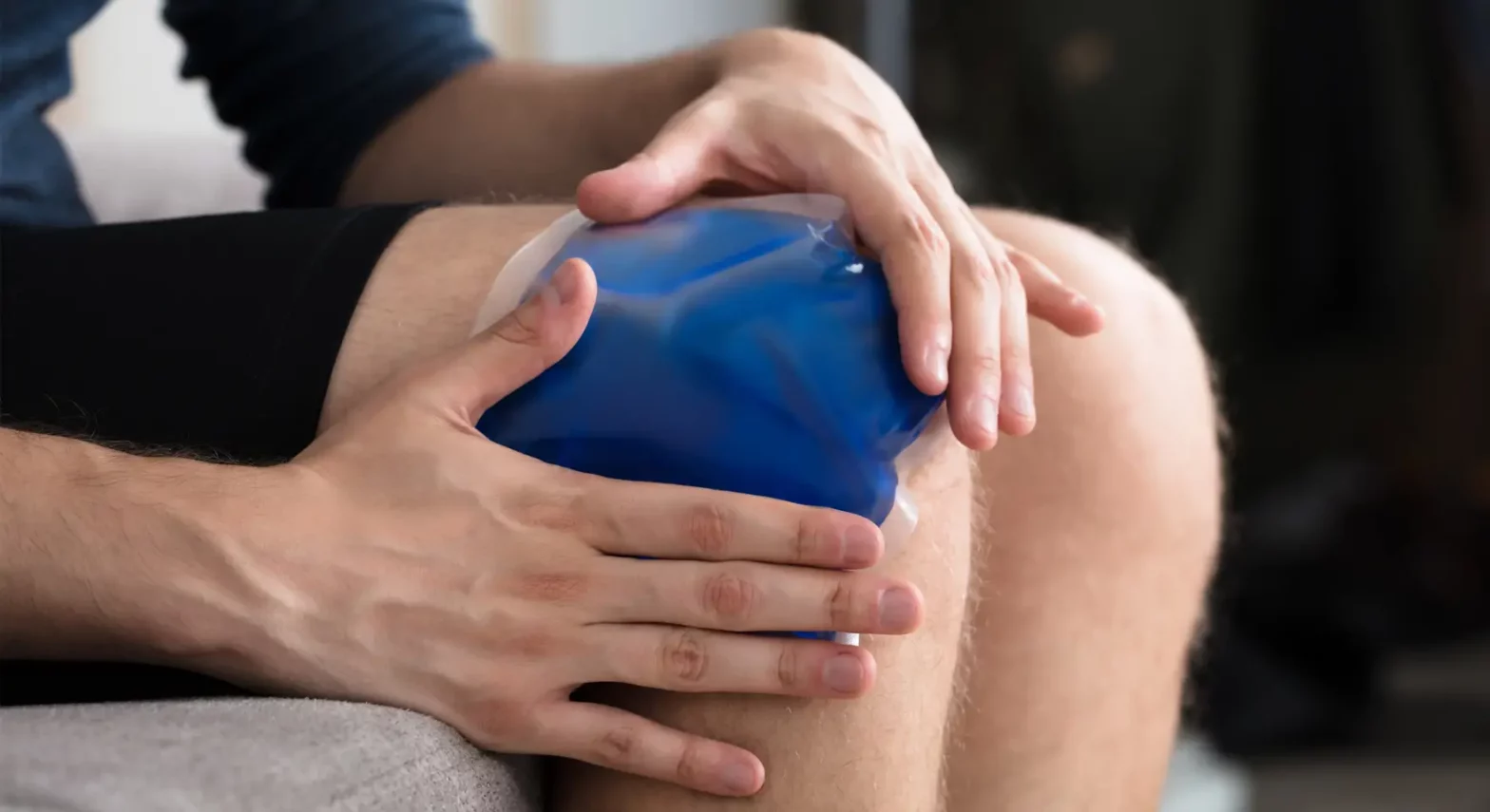May 31st, 2023
When to Ice vs When to Heat an Injury

Ice: Helps swelling in the early stages
Research shows that ice is a better option than heat for muscle and joint injuries less than 2 or 3 days old. Ice is also helpful for someone who had surgery within this same time frame. When the body undergoes any major changes (like an injury or surgery), it sends a rush of fluids to the impacted areas. These fluids contain white blood cells and other nutrients, which come from the immune system and are meant to protect the body. As these fluids build up, parts of the body will swell. While this natural process helps the body heal, too much swelling causes pain as the fluid presses up against nerves, muscles, and other structures.
Ice narrows the blood vessels, which decreases the amount of fluid going to an injured area. White blood cells and other important fluids are still doing their part to heal the injury, but less swelling usually means less discomfort. Studies show that the immediate use of ice after a soft tissue injury such as a muscle sprain can shorten recovery time and reduce the chances of bruising[1]. This is why it’s best to use ice in the early stages. Cold also numbs the body, which helps manage pain when placed on small areas.
Experts say to wrap ice cubes, an ice pack, or a bag of frozen food in a small towel before placing it on the injured area. If you don’t have anything else, you can use a washcloth after running it under cold water. It is possible to place ice directly on the skin if you don’t have anything else, but only for less than a minute at a time. Watch closely any time you are icing a body part: move the ice around periodically and check on your skin. If you notice any redness or pink areas, remove the ice immediately, since this is a sign it’s too cold.
For the best results, it’s recommended to use ice on an injury for 10 to 15 minutes at a time. If you have a muscle sprain, you can do this as needed based on your pain levels. Be sure that you take a break for at least 30 to 40 minutes before putting ice back on your injury. Those who just had surgery should ice their incision up to 4 times each day for 15 to 20 minutes each time with the same amount of breaks in between[2].
Athletes can use ice after a race, activity, or workout to relieve any swelling that may occur from overuse. Ice can also be a good pain relief option for headaches and tendon injuries, since they both involve swelling. People with poor circulation and those with diabetes and other sensory concerns should not apply ice to an injury. Diabetes and similar conditions can make it difficult for someone to feel when the ice is getting too cold. This places them at risk for cold burns and even nerve damage. Since ice lowers blood flow to certain areas, this can also make circulatory disorders worse. Anyone with these health concerns or heart conditions should speak with their doctor before using cold packs on an injury.
Expert Insight
Ice or Heat? When & How To Use For Injury Recovery + Pain Relief
Heat: Loosens stiff muscles and joints in later stages
Since heat works in the opposite way as ice does, it is recommended for different types of injuries. Heat causes blood vessels to open wider, which increases blood flow along with swelling. This is not good for anyone who just had surgery or got hurt, so people should avoid placing heat on injuries that are 2-3 days old.
Outside of that time frame, using heat is a great way to ease muscle and joint stiffness. In particular, heat is good at breaking up tension in larger muscles such as the back, neck, thighs, and calves. For this reason, many people with ongoing muscle pain due to old injuries or chronic conditions such as arthritis often turn to heat to relax soft tissues. Heat can be especially helpful for people with osteoarthritis of the elbows, knees, shoulders, and fingers. Heat is also a useful remedy for people who experience tension headaches, which are caused by stiff muscles in the neck and upper back. This type of remedy can also help athletes or people who exercise. Those looking to prepare their muscles for activity of any kind can apply heat before stretching to prevent injury.
Anyone who wants to use heat for an injury or general aches and pains can opt for dry or moist heat. Dry heat comes in the form of hot water bottles, warm compresses, and heating pads. These products can be found at most local pharmacies, but you can also make some remedies at home. For example, you can microwave a sock filled with uncooked rice as a makeshift heating pad if you can’t get one elsewhere. If you want to use moist heat, you can try a warm bath or a steamed towel, each somewhere between 92 and 100 degrees. Research shows that moist heat works better and takes less time to kick in than dry heat[3]. However, dry heat can be as effective as moist heat if you are able to apply it for 10 to 20 minutes.
Keep in mind that each of these options should be warm rather than hot. Anything that is too hot can cause burns. Just as you would do with ice, watch your skin and stop using a heated product if you notice swelling or skin redness. Applying heat to a certain area can spread infections, so do not use heat if you have an open wound or active infection.
Most new injuries respond best to a combination of heat and ice, since they both have benefits. If you are looking to use both, you can begin with ice during the first 2-3 days after your injury and then move to heat once the swelling goes down.
Remember that ice and heat should not be used instead of medical care. If you experience a new injury (especially to a body part you haven’t injured before) or have extreme pain, it’s best to call your doctor. They can perform tests to figure out whether you have a broken bone, a pulled muscle, or another type of injury. Doctors and therapists may recommend ice or heat in for certain injuries or conditions, but they work best when used with treatments such as medication.
Find an Orthopedic Doctor in Your Area





